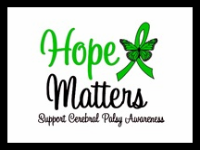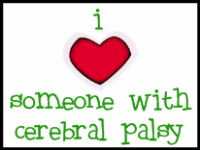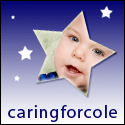
Today is the last day of CEREBRAL PALSY AWARENESS MONTH.
I wish I had all the answers to the many questions about cerebral palsy. I still have SO much to learn. Not only about CP but what I can do (or have Cole do) to improve his quality of life.
We have an appointment on May 4th for botox to be injected into Cole's hands and arms. I have been spending whatever time I can trying to research everything I possibly can about this and how it works with CP.
When we first scheduled this I had done 'some' research. I had talked to several friends that have children with CP and have tried it. Only one informed me it didn't not have an affect one way or the other, the others have only given praises stating how it has improved their child's mobility.
I felt pretty confident that this was truly the right choice for Cole. I was a little nervous about him being under anesthesia. This was more because of the bad memories/stress that I felt seeing him hooked up to machines and being monitored in the NICU than because of the botox itself. I also realize there is some danger with anyone going under anesthesia (otherwise why would they ALWAYS make you sign the release papers).
Well, this all changed when I bumped into a very sweet dear friend. I truly value her opinion and I know she would never give me ill advise. Her grand baby twin girls were in the NICU with Cole and we knew her son (the twins dad) BC (before children).
When I explained that we would be going in for botox she was very concerned and said she would NEVER let either of the girls receive botox. She explained a situation that had awful results from botox and all the research this affected person had done. She simply told me what she knew and begged me to please do my research. I know it was not her intent, but now....
I AM VERY SCARED!
It is a LOT of responsibility weighing on my shoulders right now. I have to determine if the good out weighs the evil. Do I pull back and NOT get him the botox because I am afraid? Afraid that this could paralyze him forever or that he will be in pain with no way to let me know? Would this take away his opportunity to be able to use his hands and arms?
Or, do I take the risk so that maybe he can push up and start to crawl? Would this be just what we need to loosen his tight spastic muscles so he can learn to feed himself or hold a toy and actually be able to bring it to his mouth? If we can accomplish this then maybe he could introduce new textures to his mouth (by putting all the things we think he shouldn't into his mouth)so we can give him solid instead of pureed food.
I have spoken to two neurologist (both from a very well known and well praised center and I have only heard good things about these doctors), Cole's pediatrician, five of his therapists, a LOT of my friends, the internet and God!
I don't know how to weed out my feelings to determine if it's God, my mother's intuition, or just me wanting to take advantage of every opportunity for even the slightest chance for improvement for my baby. My thoughts and concerns are completely jumbled.
I would love and appreciate if anyone reading this has an opinion, facts, or even a personal story (results from botox) to tell regarding botox injections for cerebral palsy, whether it is good or bad.
The way the botox works for cerebral palsy is it partially paralyzes the stronger muscles giving children an opportunity to stretch and strengthen the weak muscles. Injections and physical therapy will help the child achieve better muscle strength and balance.
Cole's therapists have said by loosening the tight (spastic) muscles they can be more productive in what they are trying to teach him and it will help him gain confidence (therefore making him a happy baby with less frustrations). This will also hopefully help him want to try harder since he will be seeing results.
Not every child will benefit from botox injections and only a set amount, depending on the child's body size can be given. This is why we will only be injecting (if we do) his hands and arms. They are the most spastic and although he does have tight hamstrings, he still has a beautiful step and he loves to walk in his KidWalk.
So, please, leave your comments. Give me any information YOU may have. Tell me what you would do if it were your baby. And feel free to leave me a link to your story or someone's that you may know.

see Seven Clown Circus
Check out the new Wordless Wednesday HQ!!








